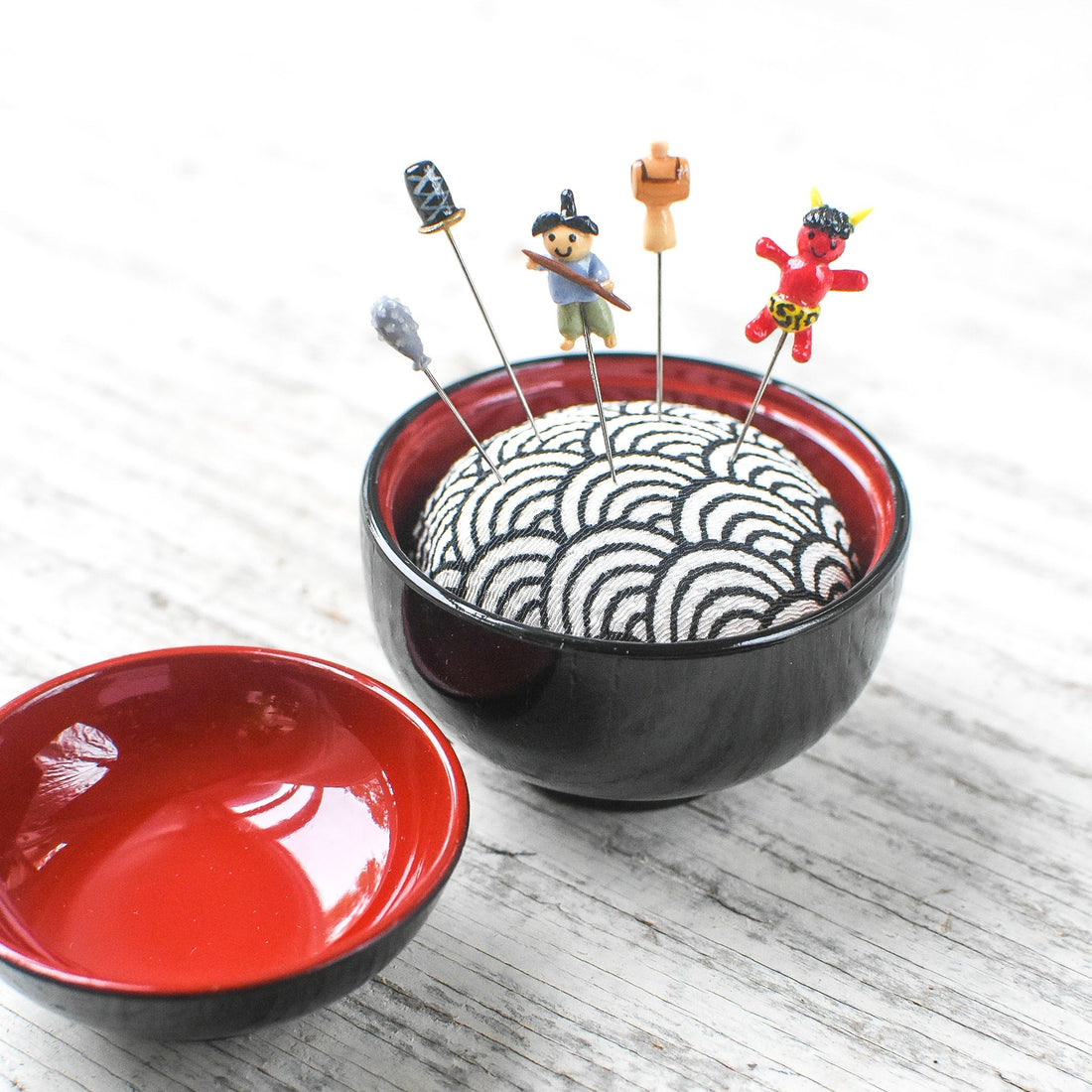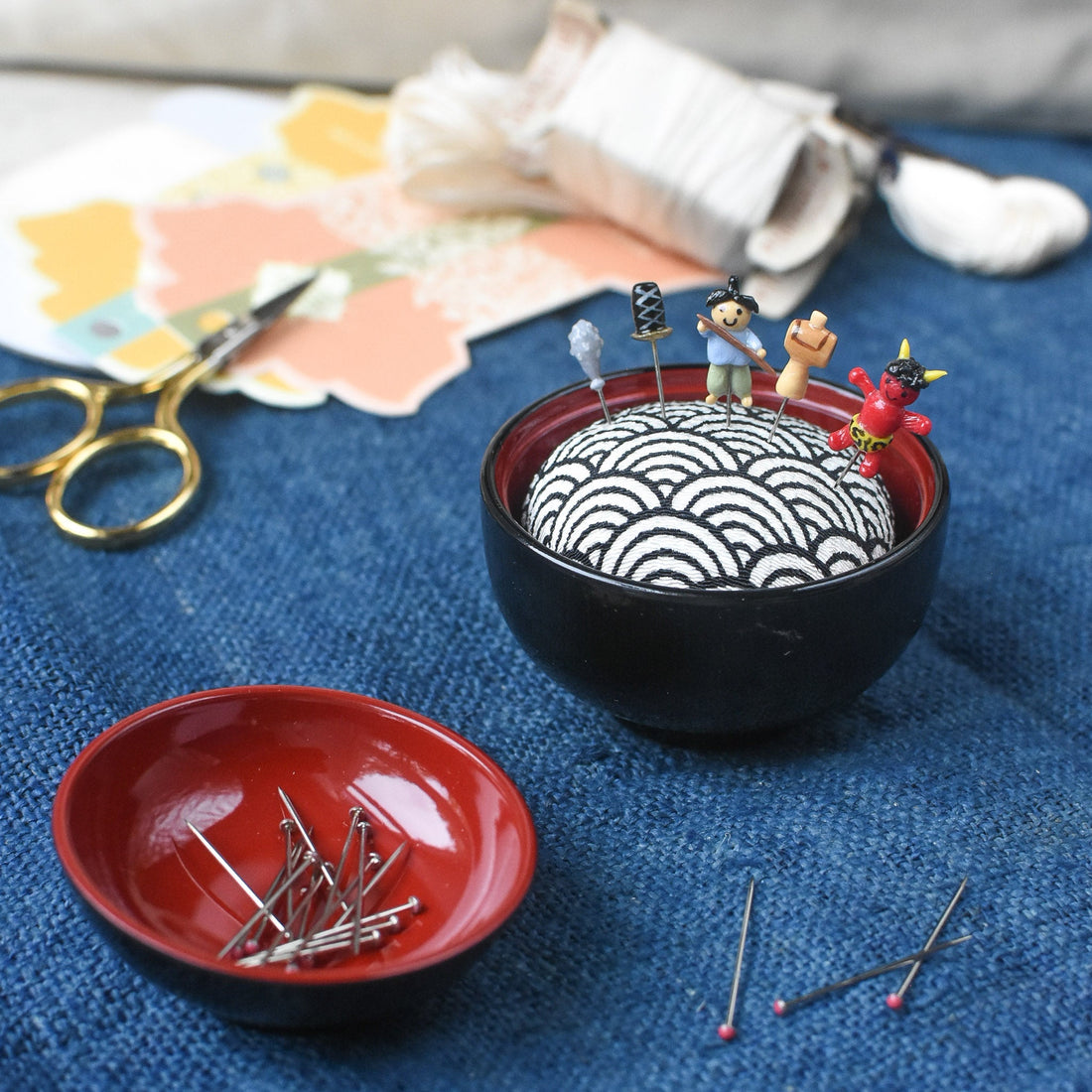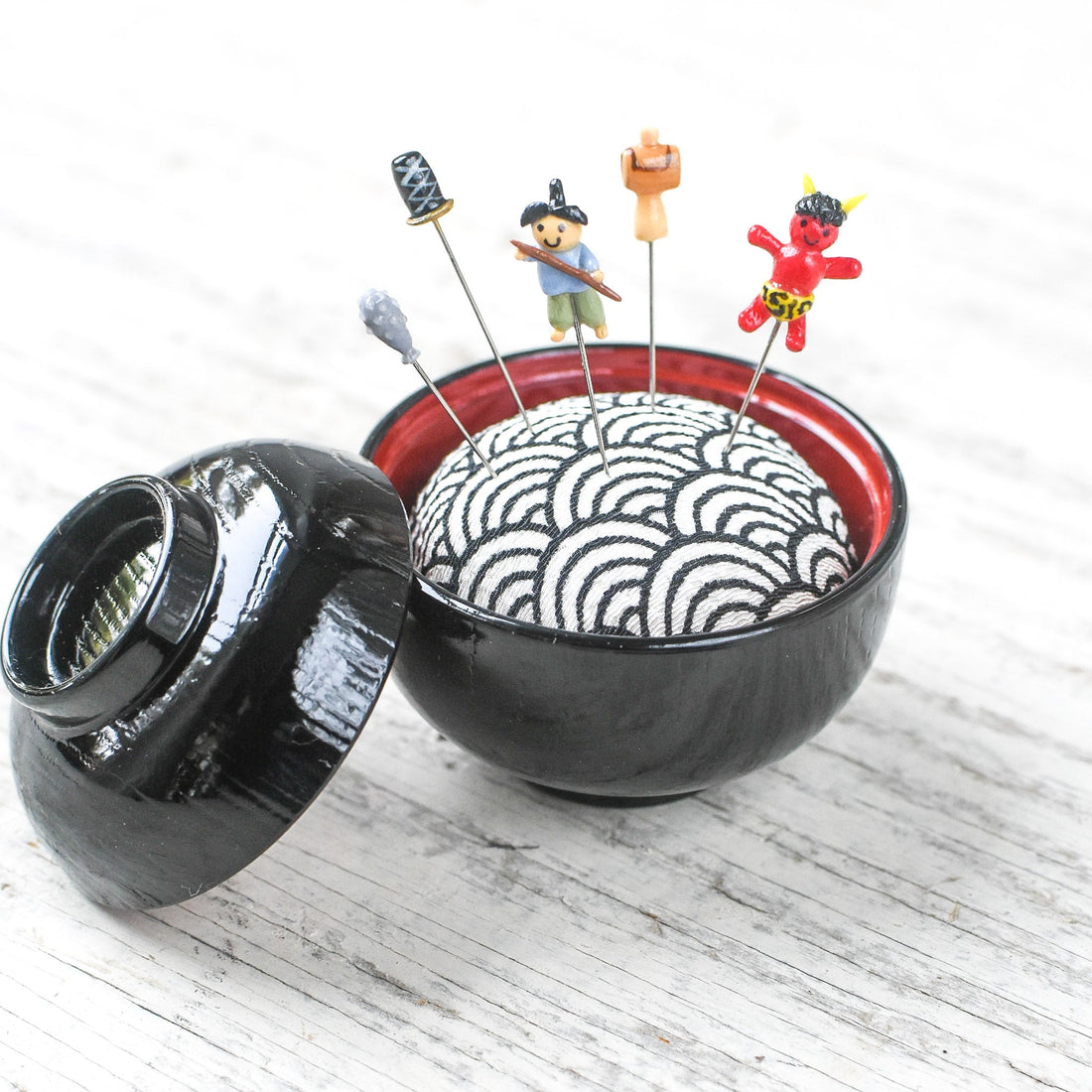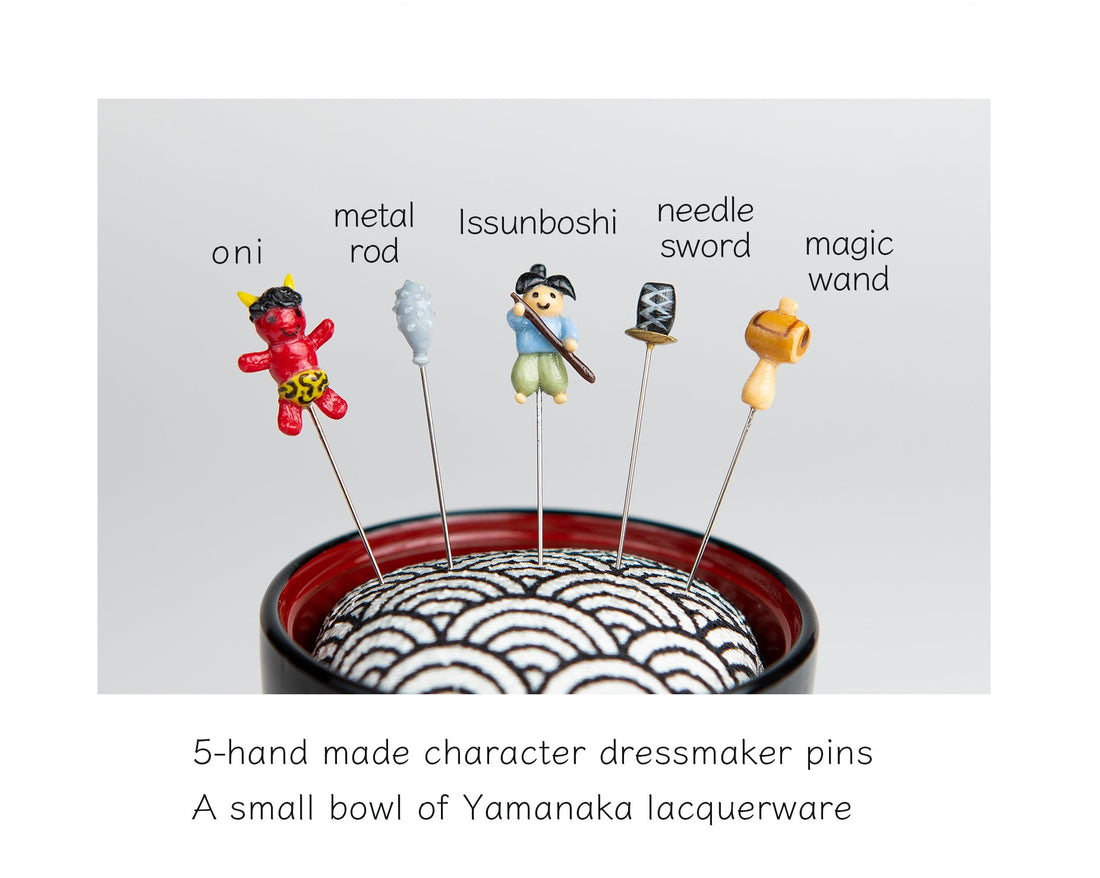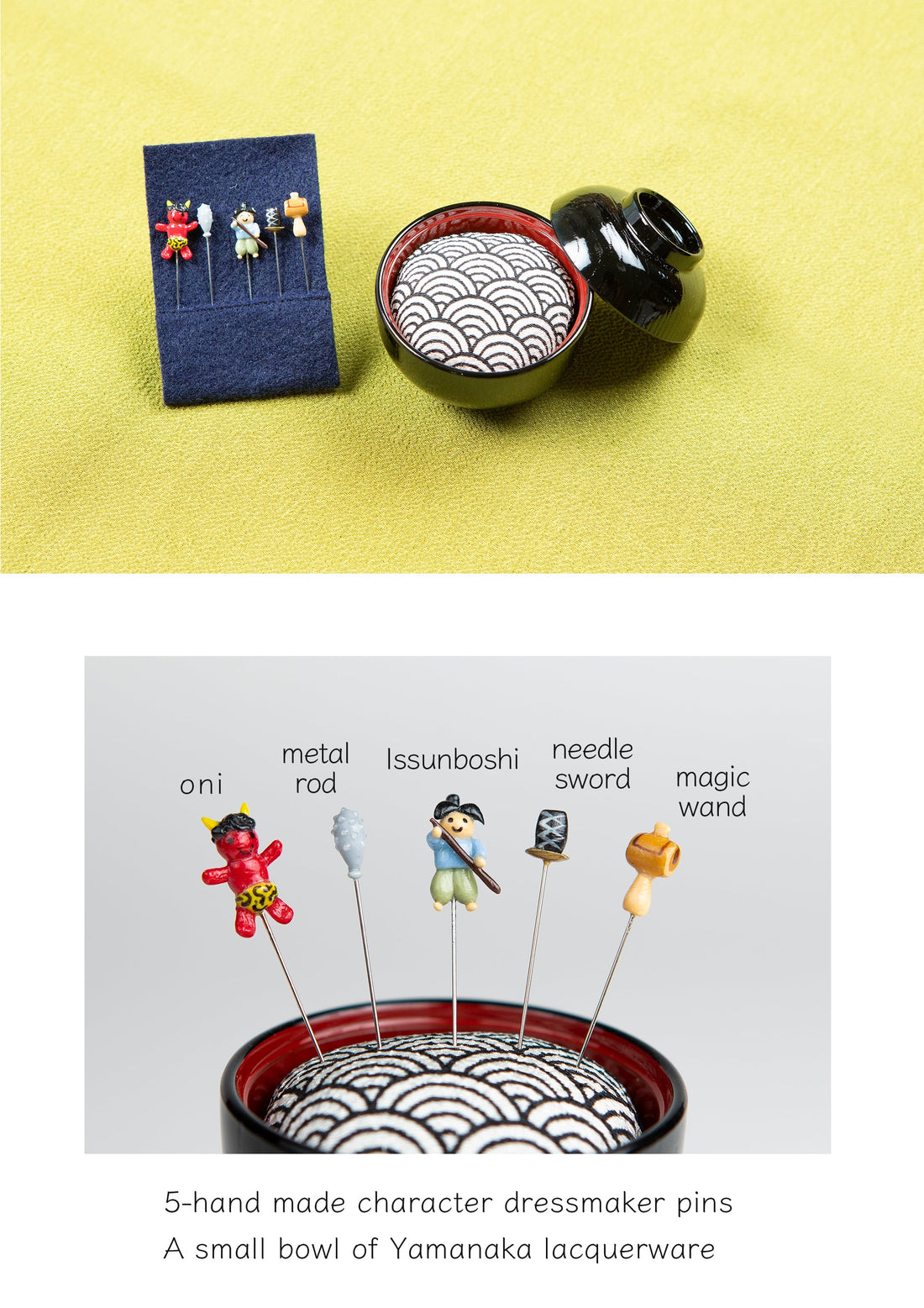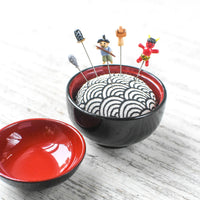
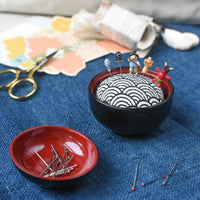
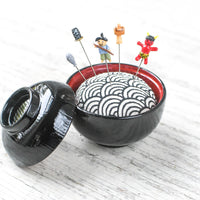
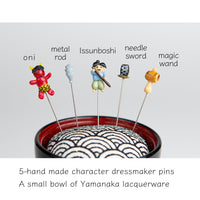
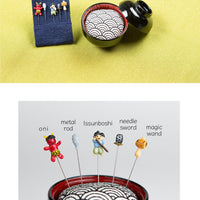
Inch Boy Folktale Pin Cushion
This pincushion is contained in a luxurious Shikki, or Yamanaka lacquerware, bowl with a lid. It is made of wood and has multiple coats of lacquerware on it. The cushion is covered with a wave patterned fabric that represents the ocean. There are also 5 hand-formed pins with characters from the folktale, Issunboshi, or Inch Boy.
Dimensions: 1-3/4" x 1-3/4" (47 mm x 47 mm)
Each pin cushion and set of pins comes boxed with an illustrated scroll with the folktale written in Japanese. It also includes a version of the folktale in English.
寸法師 "Issunbōshi" is about a boy who is a tiny boy as big as a thumb. Thus, the story is often called "Little One Inch" or "One-Inch Boy." The tale dates back at least to the Muromachi period (1392–1573). To this day, all over Japan, the story of Issunbōshi is famous.
By the way, in English when we start folktale we say "Once upon a time...", and in Japanese people say "mukashi, mukashi..." which means "long long ago...".
So, mukashi, mukashi..., there was an old, childless couple. They wished for a child and prayed each day please, please let us have a child, no matter how small." Eventually, a son was born to them. But small indeed, the child was only 1-sun (around 3 cm or just over 1 inch) in height and never grew taller. Thus, they named their cute son Issun-bōshi.
One day, the boy went on a trip to see the world. The old couple equipped him with a sewing needle for a sword, a bowl for a boat and chopsticks for oars. The one-inch warrior Issunboshi sailed down the river for the city.
He became a bodyguard to the minister's beautiful daughter in the capital. One day, they were attacked by an ogre (oni). The ogre opened his mouth and swallowed Issunboshi. But he, down in the monster's stomach, kept stabbing away, until the ogre finally spat him out and ran away. The ogre dropped his magical mallet as he went. The princess picked it up and made the wish for Issunboshi to be tall.
Then, he became a great man, and married the princess. Soon after, he invited the old man and his wife to the city, and they all lived happily ever after.
Made in Ishikawa, Japan for HIRO Co., Ltd., a company with over 85 years of experience in Kanazawa, Ishikawa Prefecture, Japan. The company collaborate with Kanazawa-based artisans to create the contemporary and playful products for daily life using with the multiple traditional crafts inherited in Kanazawa, Ishikawa, such as the Kutani porcelain and Yamanaka Lacquerware.
Hiro's work with distinct designs adapting traditional craft techniques nourished in Ishikawa Prefecture are very popular in Japan and highly regarded around the world. They are selected in shops associated with museums or art galleries.

